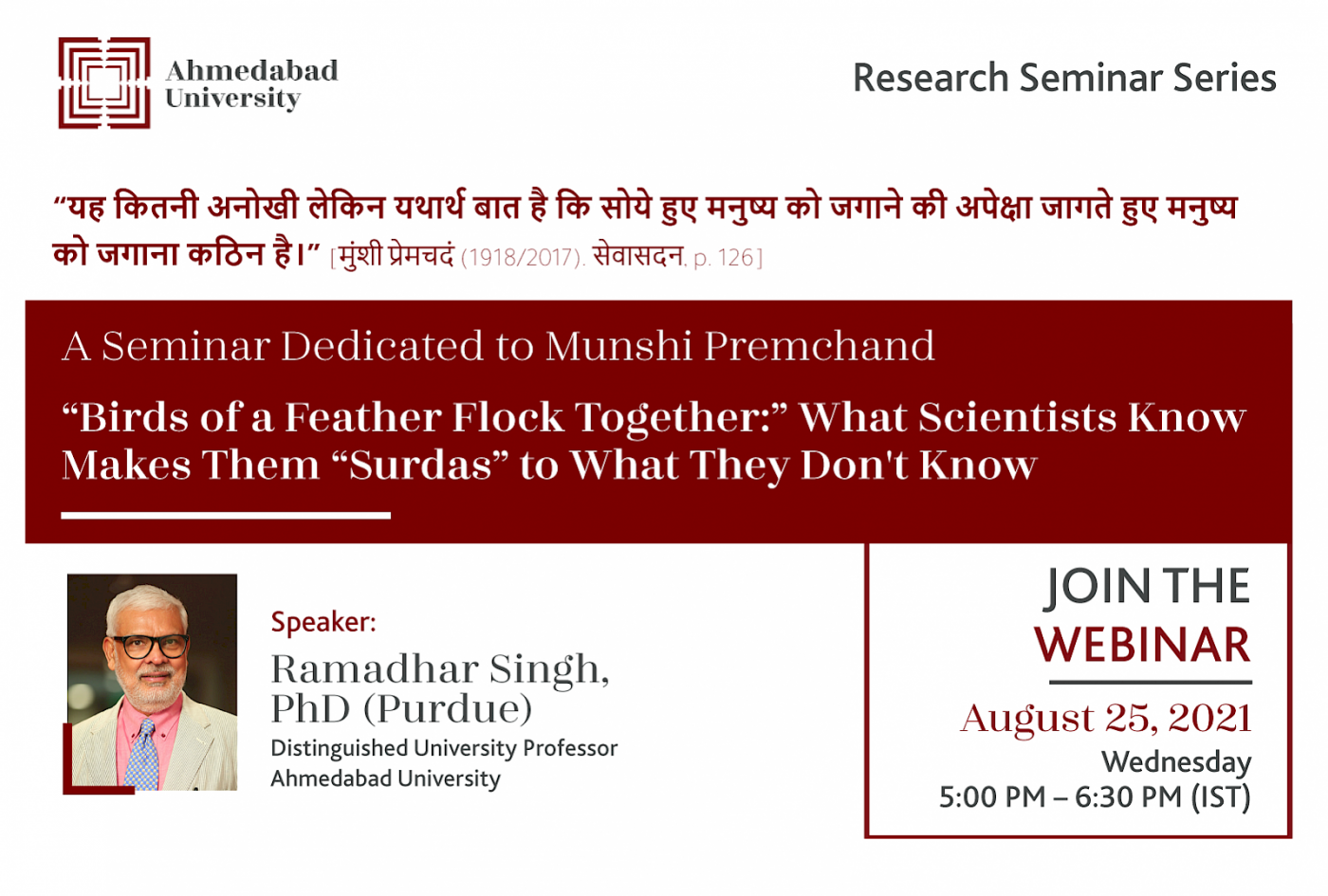Birds of a Feather Flock together: What Scientists know makes them "Surdas" to what they don't know

It is widely believed that birds of a feather flock together [चोर-चोर मौसेरे भाई। एक ही थैली के चट्टे बट्टे।]. Social psychologists supported such proverbs by manipulating attitude similarity between two persons at Time 1 (a cause) and measuring attraction between them at Time 2 (an effect). As expected, the two strangers were more attracted toward each other when they had similar rather than dissimilar attitudes. In this seminar, it will be shown that the positive causal relation between attitude similarity and interpersonal attraction is not as simple as it seems to be. The initially proposed single mechanism-based explanations (i.e., positive affect, respect for, inferred attraction of the partner, trust in the partner, or validation of one’s views by similar others) achieved no more than merely portraying the investigators as “blind” [सूरदास] to what they hadn’t known. Considering some of these mechanisms together as parallel processes at the next stage did not illustrate foresight either. The explanation appeared satisfactory only when the mechanisms considered together were treated as serial processes (i.e., one leads to another but not vice versa). Specifically, attitude similarity creates attraction by triggering latent sequential processes of Validation → Positive affect → Respect → Inferred attraction → Trust. Ideas of some of these mechanisms of similarity-attraction from stories and novels by Hindi writer Munshi Premchand (1880-1936) will be cited. Of the five mechanisms, not only the two early occurring processes of validation and positive affect but also the two last occurring processes of inferred attraction and trust are self-serving. Apparently, then, the couplet of Goswami Tulsidas (1633/1974) correctly represented the motive underlying relationship formation much earlier than any psychological finding: “सुर नर मुनि सब कै यह रीति। स्वारथ लागि करहिं सब प्रीति” (Hari, 1974, p. 52).
The seminar will be held on August 25, 2021, in Hybrid Mode.
Venue: Room 004, SAS building, Central campus, Ahmedabad University
Register for the webinar: bit.ly/3k7vhA9



